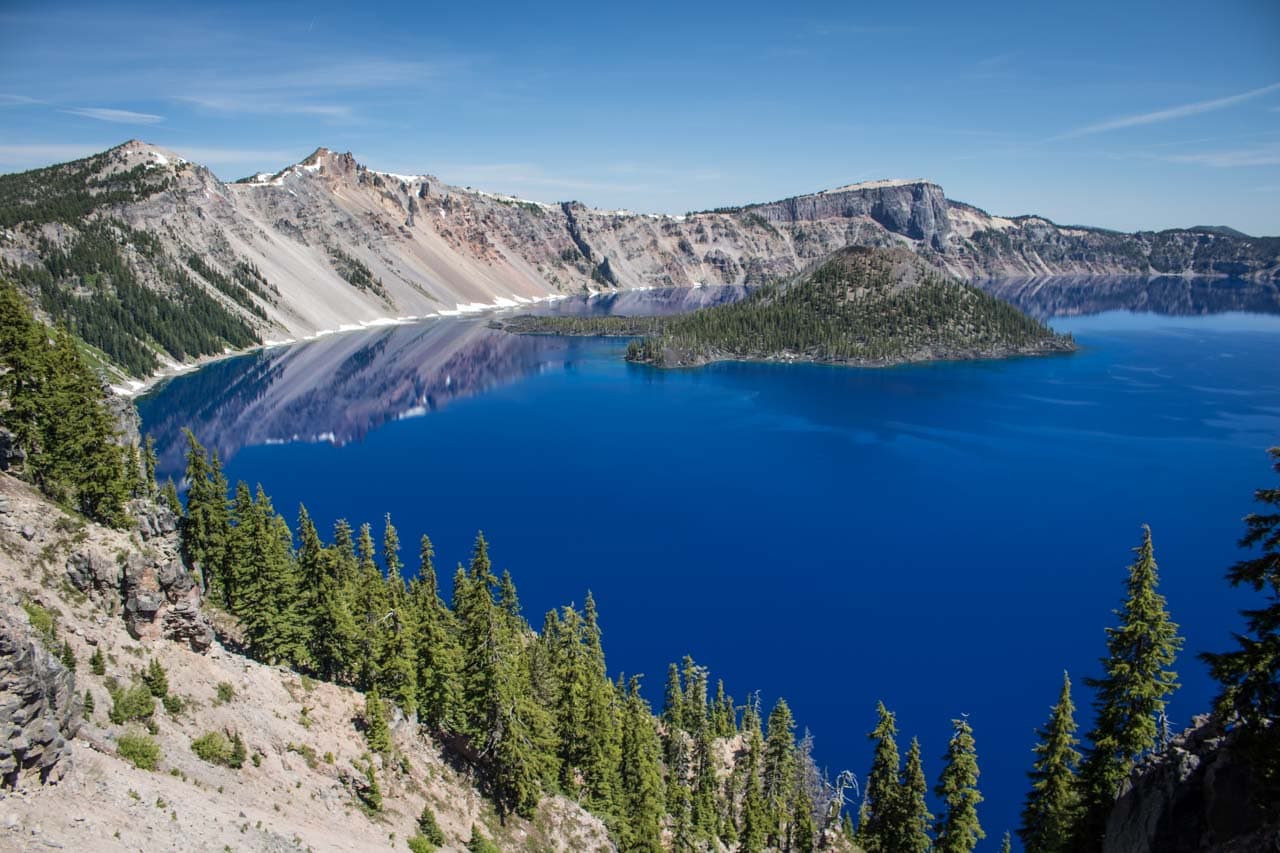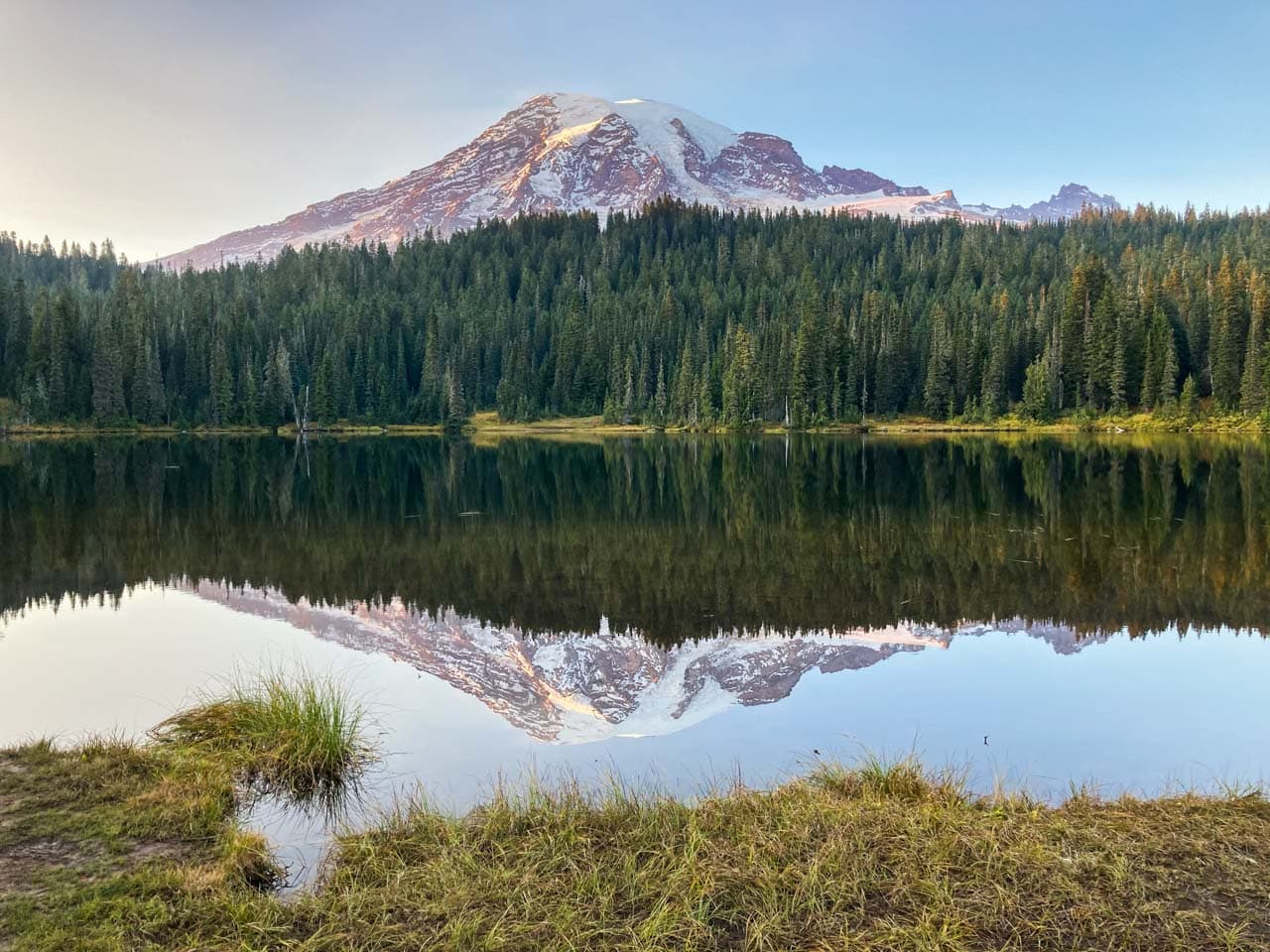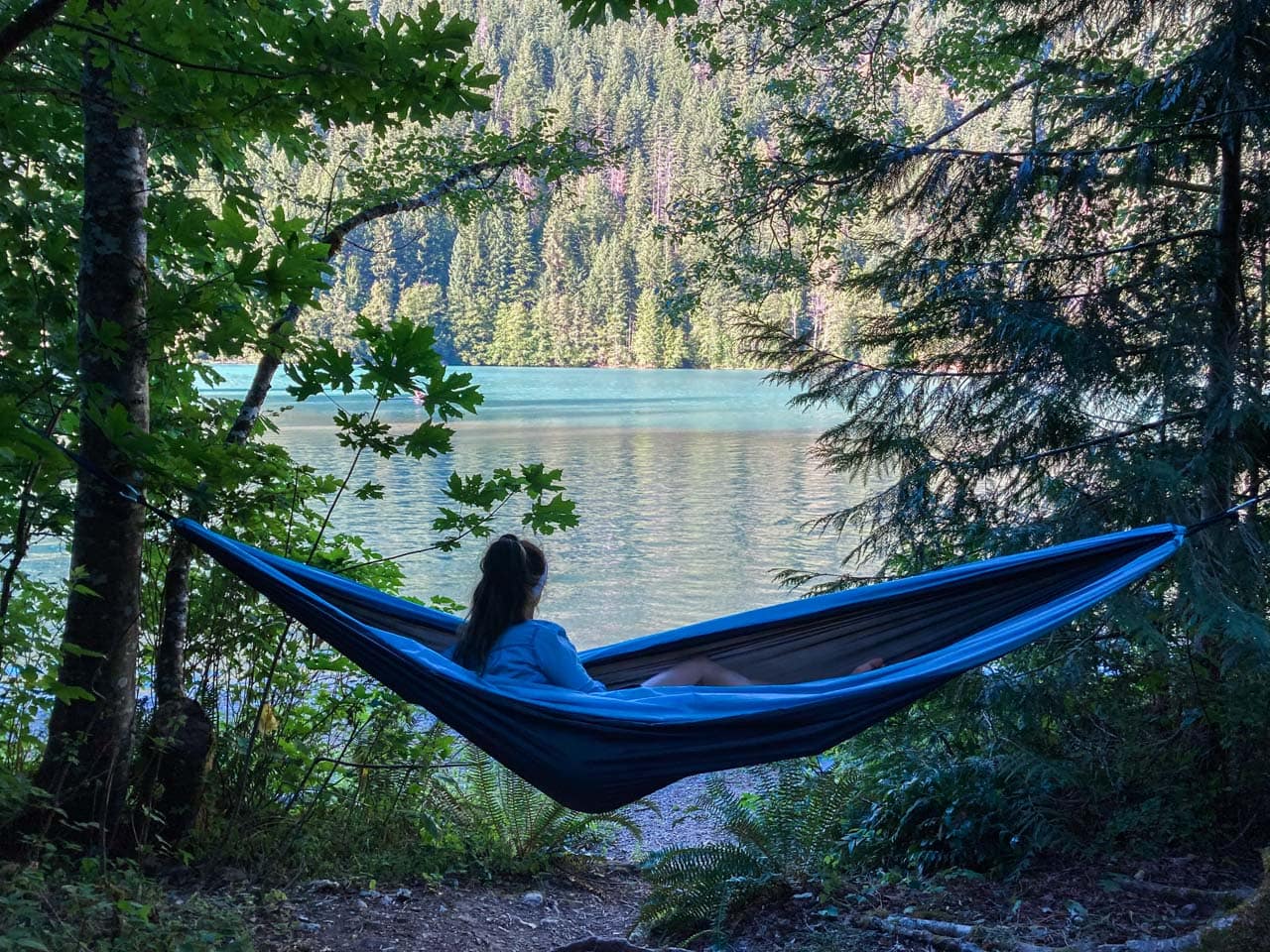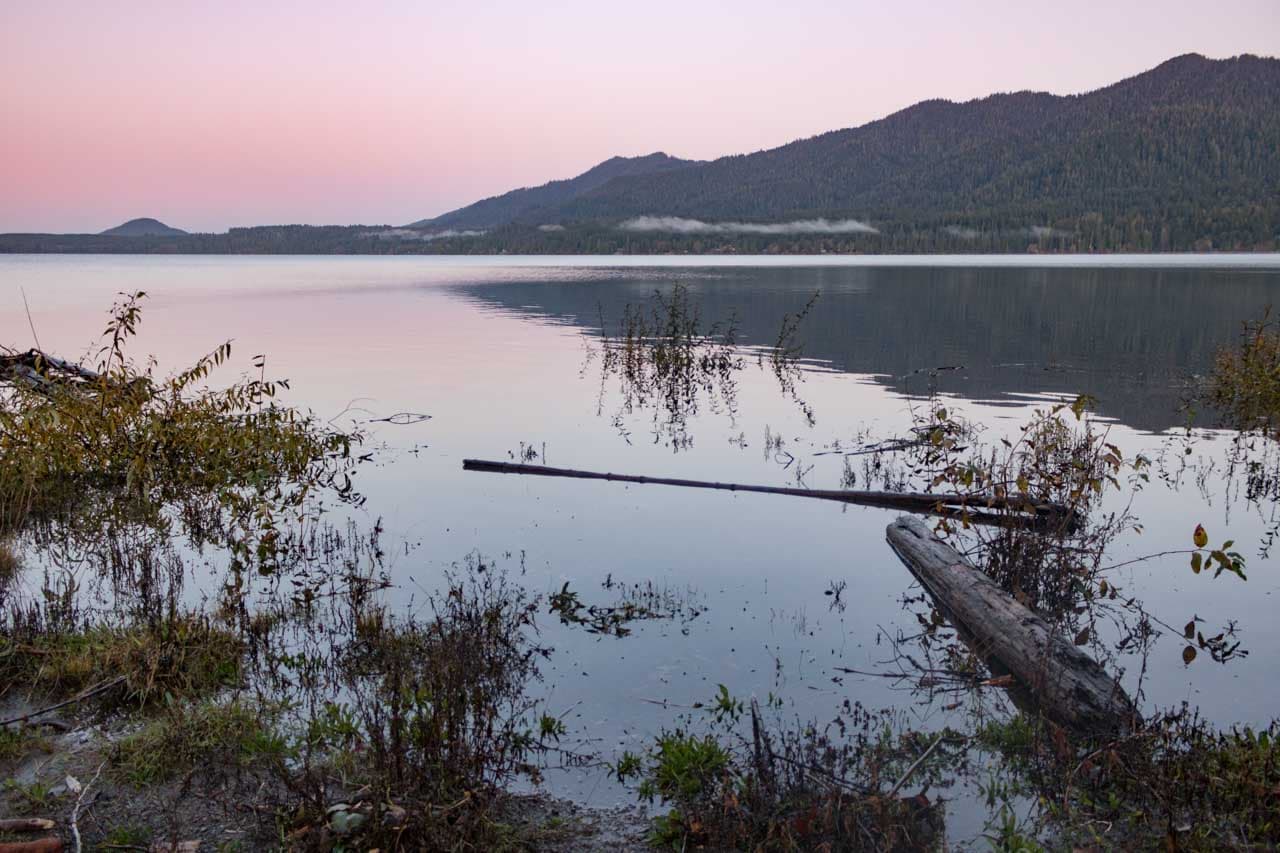LAST UPDATE: July 23, 2021
After weeks of drought and heat waves, there are now fire bans in all Pacific Northwest national parks.
The unprecedented conditions in the region result in extreme fire danger across the Northwest. Many state-managed and US Forest Service lands in both Washington and Oregon, where America’s largest wildfire is currently blazing, have already issued fire bans.
All Pacific Northwest National Parks Ban Campfires
In separate press releases, the four Pacific Northwest national parks—Crater Lake, Mount Rainier, Olympic and North Cascades—all announced complete bans of all campfires and the ignition of wood, briquettes, charcoal or barbecues.
Below are all current fire bans in the Pacific Northwest national parks, as provided by the National Park Service, and as of the date of publication of this blog post.
Crater Lake National Park Fire Ban

- Last fire ban update: July 15
- News release link: Crater Lake website
With the warm, dry, and breezy conditions and continued elevated risk for wildland fire in southern Oregon, Crater Lake National Park is implementing a full fire ban. The outlook is for above normal significant wildland fire potential for the next several months.
To ensure public safety and to provide the highest degree of protection to park resources, the following fire restrictions will be implemented beginning 12:01 AM on Saturday July 17, 2021 and will remain in effect until further notice:
Campfires
- Wood fires and charcoal fires are NOT allowed within Crater Lake National Park.
- Portable stoves and lanterns using gas, jellied petroleum or pressurized liquid fuel are allowed in campgrounds, picnic areas, backcountry areas and residential areas. Camp stoves must only be used in areas clear of flammable material for a distance of five feet in all directions and must remain attended at all times when in use.
Smoking
Smoking is permitted only in the following areas:
- In vehicles, provided that an ashtray is used for ashes and butts.
- While stopped in an area at least three (3) feet in diameter that is barren or free of all flammable materials. Ashes and butts must be disposed of safely and may not be discarded on the ground.
Fireworks
- Fireworks are prohibited in the park at all times.
The purpose of these restrictions is to ensure the safety of park visitors and employees, and for the protection of the park’s natural and cultural resources.
These restrictions are dependent upon fire activity and weather conditions and will remain in effect until conditions improve.
Our goal is voluntary compliance. However, persons who fail to comply with these restrictions may be cited or arrested.
Mount Rainier National Park Fire Ban

- Last fire ban update: July 16
- News release link: Mount Rainier website
Beginning Friday, July 23, 2021 until rescinded, Mount Rainier National Park will implement a parkwide fire ban for all campfires and the ignition of wood, briquettes, or any fuel in fire pits, fire pans, and barbeque grills.
This brings the park in alignment with fire bans on adjacent state and US Forest Service lands. These bans are in place to reduce the risk of human-caused wildland fire area-wide during hot, dry conditions and high fire danger.
The Mount Rainier National Park fire ban supports national incident management efforts by reducing the risk of wildland fire on park lands and the subsequent need to draw from limited firefighting resources.
The nation is currently at Fire Preparedness Level 5 (PL5), the highest level of wildland fire activity. Several geographic areas are experiencing large, complex wildland fire incidents, which have the potential to exhaust national wildland firefighting resources. At least 80 percent of the country’s incident management teams and wildland firefighting personnel are committed to wildland fire incidents.
Use of portable, petroleum-filled cooking stoves, heating devices, and/or lanterns using liquefied or bottled fuel are permissible provided such devices can be turned off.
Discharging, or using any kind of fireworks, tracer ammunition or other incendiary devices in any location on federal lands is always prohibited.
If you observe smoke or flames inside the park or on nearby lands, please dial 911 or notify a ranger.
North Cascades National Park Fire Ban

- Last fire ban update: July 15
- News release link: North Cascades website
Effective Friday, July 16, 2021 campfires or the ignition of wood, briquettes, or any fuel in fire pits, fire pans and barbeque grills, are banned in all portions of the North Cascades National Park Service Complex. This includes North Cascades National Park, Ross Lake National Recreation Area, and Lake Chelan National Recreation Area.
It also includes all National Park Service lands and campgrounds along State Route 20 as well as Hozomeen and the entire Stehekin Valley. Stoves or grills that are solely fueled by liquid petroleum fuels for the purpose of cooking are allowed in all locations.
The burn ban complements similar restrictions in the adjacent Okanogan-Wenatchee National Forest and British Columbia, Canada.
Use caution when smoking and do not discard cigarette butts. Discharging, or using any kind of fireworks, tracer ammunition or other incendiary devices in any location on federal lands is always prohibited.
If smoke or flames are visible, dial 911 or report at any ranger station.
Olympic National Park Fire Ban

- Last fire restrictions update: July 23
- News release link: Olympic website
Beginning at midnight Friday, July 23, 2021, Olympic National Park and Olympic National Forest will implement a complete ban on all campfires, including charcoal. This includes the coastal areas of Olympic National Park.
Gas or propane camp stoves may still be used in the wilderness backcountry and campgrounds, but should be operated well away from flammable vegetation and forest litter. Extreme caution is urged with any open flame.
This move to Stage 2 fire restrictions is due to the extremely dry conditions that are forecasted to continue; the need to align with state and county campfire restrictions; the current commitment of firefighting resources battling numerous wildfires around the nation; and the strain any new uncontrolled fires would place on these resources.
Both the Northwest region and the nation remain at a Preparedness Level 5—the highest level of wildland fire activity. The majority of firefighting resources are already deployed due to the large amount of wildland fire activity throughout the country.
“All of western Washington, including the Olympic Peninsula, is extremely dry this year. By following these restrictions, visitors can help reduce the chance of unintentional fires, especially when firefighting resources are stretched thin with an already very active fire season across the west.”
Todd Rankin, Fire Management Officer for Olympic Interagency Fire Management
Prior to the recent heatwave, precipitation levels were already below average this year elevating wildfire risk across the western side of Washington state.
The recent record-breaking temperatures felt across the Pacific Northwest have resulted in more rapid drying, quickly elevating the fire danger across the state to a level not typically seen at this time of year. The safety of firefighters and the public are top priority.
The public is urged to be aware of the high fire danger and take precautions to ensure fire safety. Visitors to public lands should always use caution to prevent human-caused wildfires. To reduce the risk, please consider the following:
- Fireworks are always prohibited on federal public lands.
- Before going camping, learn of any new restrictions that may be in place.
- If smoking, always dispose of cigarette debris in some type of an ashtray.
Call 911 or your local non-emergency line to report illegal use of fireworks or unsafe use of fire in these Pacific Northwest national parks. Additional campfire and wildfire safety information can be found at www.smokeybear.com.
